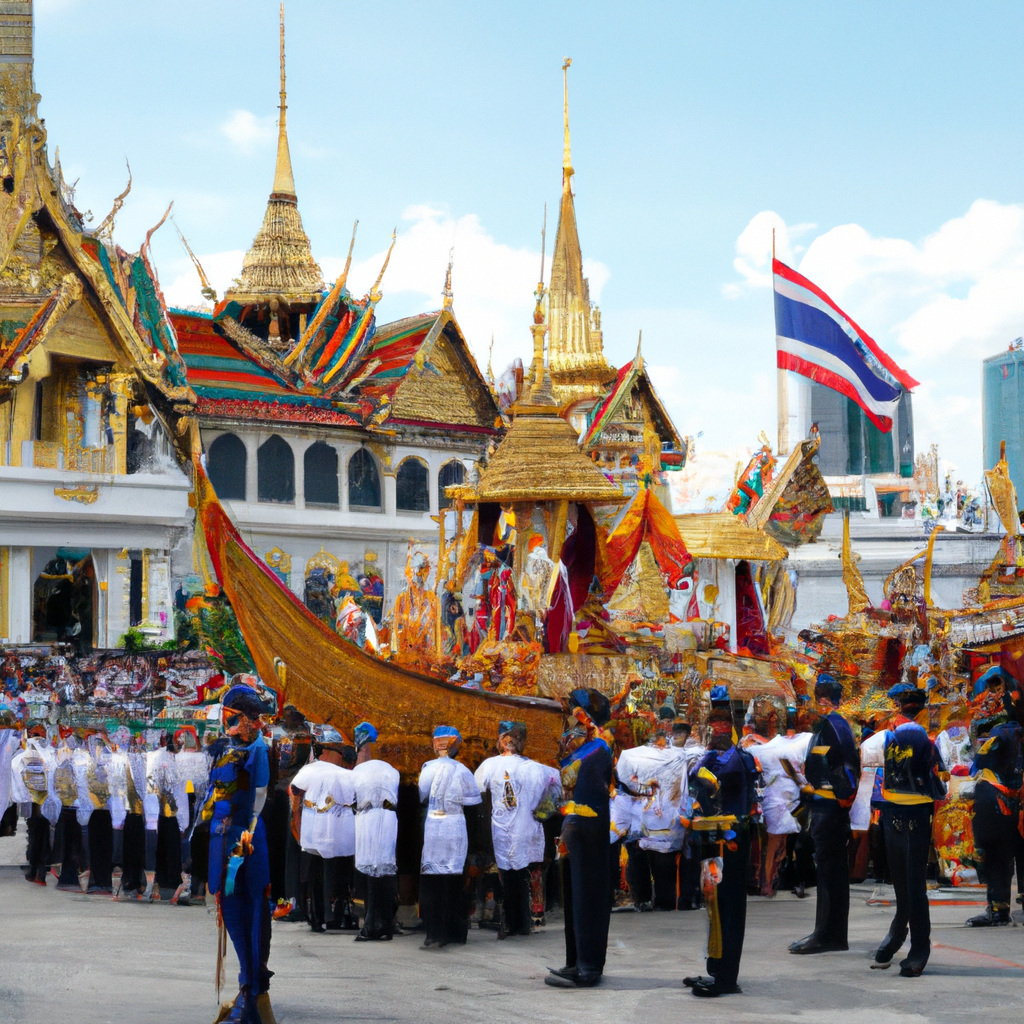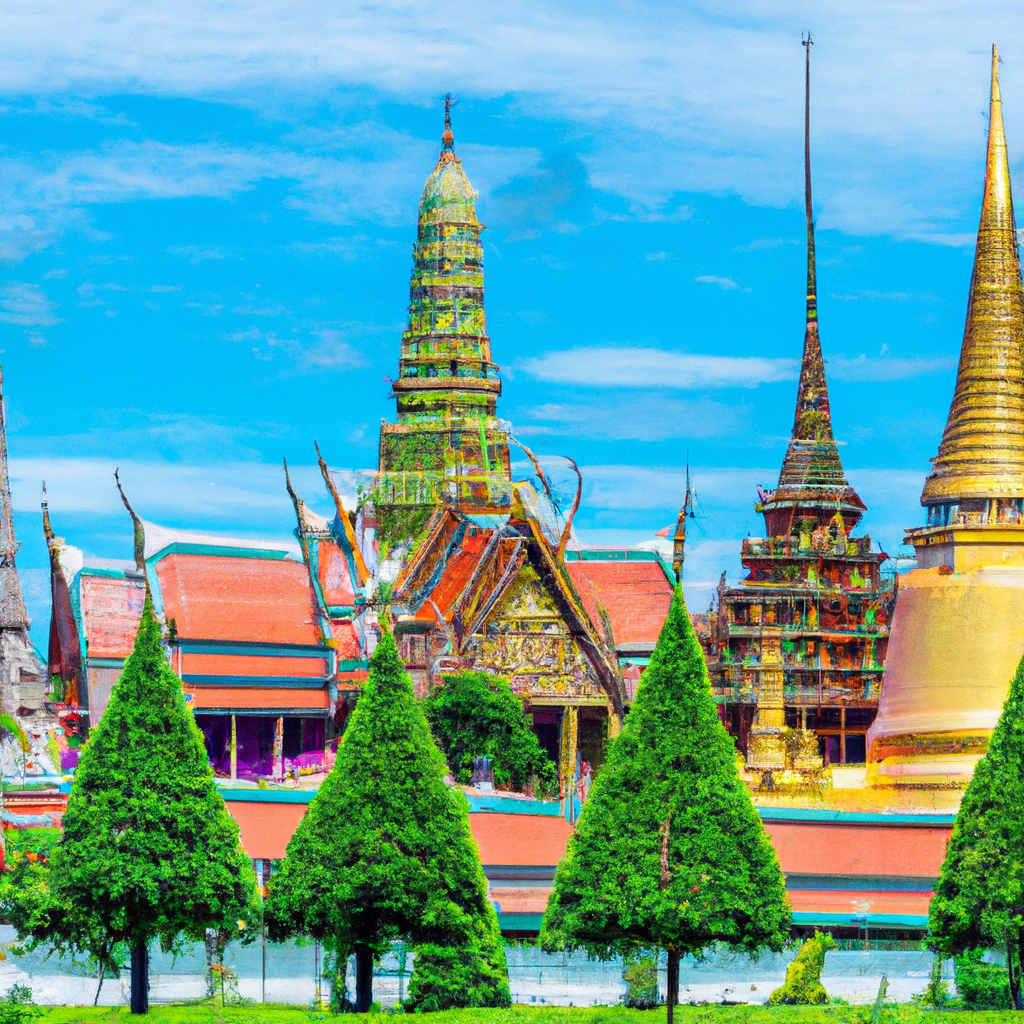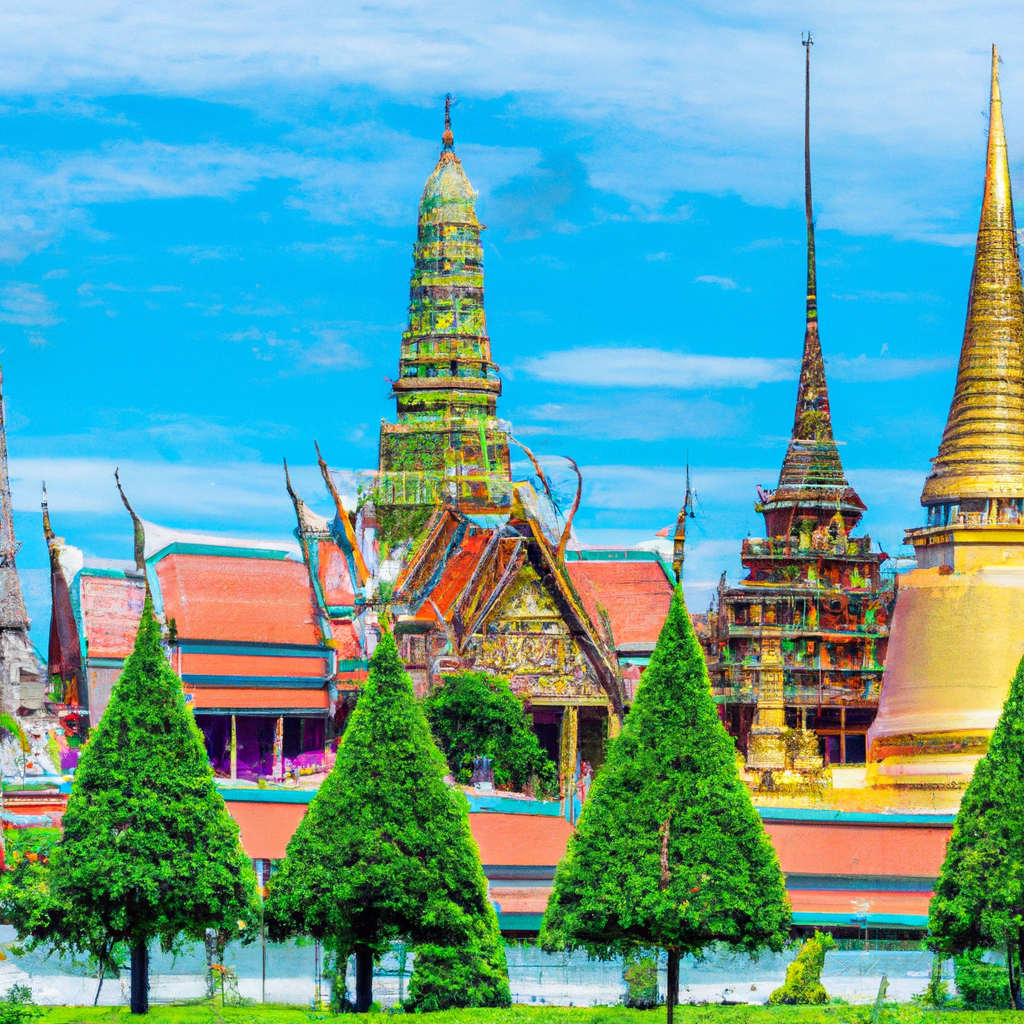Are you ready to embark on a journey through the magnificent royal palaces of Thailand? From opulent grandeur to intricate architectural details, these royal palaces are a testament to the country’s rich history and cultural heritage. As you explore each palace, you’ll not only be captivated by their beauty but also gain a deeper understanding of Thailand’s traditions and customs. Whether you’re a history buff, an architecture enthusiast, or simply looking to immerse yourself in the wonders of Thailand, this historical tour of the forgotten royal palaces is sure to leave you in awe.
The Forgotten Royal Palaces of Thailand: A Historical Tour
Thailand, known for its stunning beaches, vibrant cities, and delicious Thai cuisine, is also home to a rich history of royal palaces. While the Grand Palace in Bangkok may be the most well-known, there are several other palaces scattered throughout the country that offer a glimpse into Thailand’s regal past. In this article, we will take you on a journey to explore the forgotten royal palaces of Thailand, each with its own unique historical significance, impressive architecture, and breathtaking surroundings.
1. Grand Palace
1.1 History of Grand Palace
The Grand Palace in Bangkok stands as a testament to Thailand’s grandeur and wealth. Built in 1782, the palace served as the official residence of the Kings of Siam until the early 20th century. It was not only a royal residence but also the administrative and ceremonial center of the country. Over the years, the Grand Palace grew in size and complexity, with various kings adding their own touches and structures to the complex.
1.2 Architecture and Design
The architecture of the Grand Palace is a stunning blend of Thai, European, and Chinese influences. The intricate details, vibrant colors, and gold leaf embellishments make it a true architectural marvel. The centerpiece of the Grand Palace is the Temple of the Emerald Buddha, which houses a sacred Buddha image carved from a single block of jade. The meticulous craftsmanship of the temple and the surrounding buildings never fail to leave visitors in awe.
1.3 Must-See Highlights
While the entire Grand Palace complex is worth exploring, there are a few highlights that should not be missed. Wat Phra Kaew, or the Temple of the Emerald Buddha, is the most revered temple in Thailand and the spiritual center of the country. The Phra Mondop, a small library within the temple grounds, houses ancient Buddhist scriptures and is considered a holy site. Another must-see is the Chakri Maha Prasat Hall, an elegant building that serves as the official residence of the King of Thailand.

2. Bang Pa-In Royal Palace
2.1 Historical Significance
Located in Ayutthaya Province, the Bang Pa-In Royal Palace has a history dating back to the 17th century. Originally built as a summer retreat for the royal family, it later fell into disrepair but was restored by King Rama IV in the 19th century. The palace has since served as a residence for several Thai kings and queens and witnessed important historical events, such as diplomatic meetings and the signing of treaties.
2.2 Unique Architecture
Bang Pa-In Royal Palace is known for its diverse architectural styles, reflecting the eclectic tastes of the Thai monarchy. From traditional Thai-style pavilions to European-inspired mansions, each building within the palace complex tells a different story. The most famous structure is the Aisawan Dhiphya-Asana Pavilion, also known as the “Divine Seat of Personal Freedom,” which sits in the middle of a picturesque pond and features exquisite intricate designs.
2.3 Impressive Gardens
The palace grounds are adorned with meticulously manicured gardens and beautifully landscaped lawns. Strolling through these gardens, visitors can enjoy the tranquility and peacefulness that the royal family once sought in this idyllic retreat. The gardens are filled with colorful flowers, towering trees, and ornamental shrubs, creating a perfect backdrop for a leisurely stroll or a picnic.
3. Phra Nakhon Khiri Historical Park
3.1 Historical Background
Perched atop a hill in Phetchaburi Province, Phra Nakhon Khiri Historical Park offers a glimpse into the history of the Rama IV era. King Rama IV, also known as King Mongkut, built the complex in the mid-19th century as a summer palace and a place of refuge during times of conflict. The park is surrounded by lush greenery and offers panoramic views of the surrounding countryside.
3.2 The Three Palaces
Phra Nakhon Khiri is composed of three interconnected palaces, each serving a different purpose. The first palace, called Phra Tamnak Yai, was the residence of King Rama IV and his family. This palace features a blend of Thai, Chinese, and European architectural styles and is furnished with period furniture and artworks. The second palace, Phra Tamnak Noi, was used as the king’s private quarters. Lastly, there is the Phra Thinang Wehat Chamrun, a palace specifically built to showcase the king’s astronomical instruments and offer a stunning view of the surrounding area.
3.3 Spectacular Views from the Hilltop
One of the main attractions of Phra Nakhon Khiri Historical Park is the panoramic view from the hilltop. Visitors can climb the steep stairs that lead to the summit, where they will be rewarded with breathtaking vistas of the city, the nearby coast, and the majestic Phetchaburi River. The scenery is particularly stunning during sunrise or sunset, when the golden light bathes the landscape.

4. Wimanmek Palace Museum
4.1 Royal Museum
Wimanmek Palace Museum, located within the Dusit Palace complex in Bangkok, is a treasure trove of artifacts and memorabilia from Thailand’s royal history. Built-in 1900, it is the largest golden teak building in the world and was originally King Rama V’s royal residence. Today, it serves as a museum dedicated to preserving and showcasing Thailand’s rich cultural heritage.
4.2 The World’s Largest Golden Teak Building
The architecture of Wimanmek Palace is truly impressive, with its intricate wooden carvings, ornate decorations, and golden teak panels. The palace consists of 81 rooms, all interconnected and furnished with exquisite antiques and artifacts from the past. Walking through the hallways, you can’t help but admire the craftsmanship and attention to detail that went into creating this architectural masterpiece.
4.3 Intricately Decorated Rooms
Each room of Wimanmek Palace offers a unique glimpse into the royal lifestyle of King Rama V. From the grand reception hall to the stunningly decorated bedrooms, every corner is adorned with opulent furnishings and decorative arts. Visitors can admire intricate mother-of-pearl inlays, elegant chandeliers, and beautiful murals that depict scenes from royal life. The museum also houses an impressive collection of royal garments, porcelain, and weaponry.
5. Vimanmek Mansion
5.1 Showcase of Thai Art and Craftsmanship
Located within the Dusit Palace complex, Vimanmek Mansion is another testament to Thailand’s rich heritage. Built-in 1900, this former royal residence is a unique fusion of Thai architecture and European influence. The mansion is made entirely of teakwood and was once the world’s largest teakwood building.
5.2 Former Royal Residence
Vimanmek Mansion was originally constructed in a traditional Thai-style design to serve as a residence for King Rama V. It later fell into disrepair but was meticulously restored to its former glory in the 1980s. Today, the mansion showcases a wide range of artifacts, including royal memorabilia, antique furniture, and traditional Thai textiles.
5.3 Amazing Antiques and Artworks
The rooms of Vimanmek Mansion are filled with an impressive collection of antiques and artworks. Visitors can admire delicate porcelain vases, intricately carved furniture, and stunning gilded sculptures. One of the highlights of the mansion is the King’s Throne Hall, where a golden throne embellished with precious stones takes center stage.
6. Suan Pakkad Palace
6.1 Home to Prince Chumbhot
Nestled in the heart of Bangkok, Suan Pakkad Palace was once the residence of Prince Chumbhot of Nagara Svarga. The palace complex consists of several traditional Thai houses, each relocated from different parts of the country and reassembled in this serene oasis.
6.2 Art and Artifact Collections
Suan Pakkad Palace is now a museum housing a vast collection of art and artifacts, including ancient pottery, bronze sculptures, and traditional Thai musical instruments. The museum provides a unique insight into Thai culture, with displays showcasing the diverse regional traditions and craftsmanship of the country.
6.3 Lush Gardens and Tranquil Atmosphere
The palace grounds are adorned with lush gardens and ponds, providing a tranquil retreat from the bustling city. Strolling through the gardens, you can admire the exquisite architecture of the traditional Thai houses and the delicate beauty of the lotus blossoms. The peaceful atmosphere of Suan Pakkad Palace makes it a perfect place to escape the hustle and bustle of Bangkok.
7. Maruekhathaiyawan Palace
7.1 Historical Importance
Located on the coast of Cha-Am, Maruekhathaiyawan Palace was constructed in the early 20th century as a seaside retreat for King Rama VI. The palace played a significant role in the history of Thailand, as it served as a royal residence during a time of political and social change.
7.2 Distinctive Architecture
Maruekhathaiyawan Palace is known for its distinctive architectural style, which blends traditional Thai elements with Victorian influences. The palace is built on stilts to withstand flooding and features long corridors, lofty ceilings, and spacious verandas that capture the sea breeze. The cooling effect of the sea breeze, combined with the intricate wooden details and pastel colors, creates a charming and unique ambiance.
7.3 Beachside Location
One of the main draws of Maruekhathaiyawan Palace is its stunning beachside location. Set against the backdrop of the Gulf of Thailand, the palace offers magnificent views of the azure waters and pristine sandy beaches. Visitors can take a leisurely stroll along the coastline or relax on the beach, enjoying the refreshing sea breeze and the sound of crashing waves.
8. Phanom Rung Historical Park and Prasat Hin Muang Tam
8.1 Ancient Khmer Temples
Phanom Rung Historical Park and Prasat Hin Muang Tam are two ancient Khmer temple complexes located in Buriram Province. Built between the 10th and 13th centuries, these temples represent the pinnacle of Khmer architecture and stand as a testament to the historical and cultural connections between Thailand and Cambodia.
8.2 Remarkable Stone Carvings
The temples of Phanom Rung and Muang Tam are renowned for their intricate stone carvings, depicting scenes from Hindu mythology and ancient Khmer beliefs. The ornate bas-reliefs, lintels, and pediments are a testament to the skill and craftsmanship of the Khmer artisans who built these temples. Visitors can spend hours marveling at the intricate details and trying to decipher the stories engraved on the stones.
8.3 Religious and Cultural Significance
Phanom Rung and Muang Tam played a significant role in the religious and cultural practices of the Khmer empire. The temples were dedicated to the Hindu gods Shiva and Vishnu and were used for religious ceremonies and royal rituals. Today, these temple complexes are still held in high regard and are popular pilgrimage sites for Buddhists and Hindus alike.
9. Phya Thai Palace
9.1 Residence of the Crown Prince
Situated in the heart of Bangkok, Phya Thai Palace is the official residence of the Crown Prince of Thailand. Built-in the early 20th century, the palace is a fine example of French-inspired architecture and serves as the royal family’s ceremonial and administrative center.
9.2 French-Inspired Architecture
Phya Thai Palace is characterized by its elegant and symmetrical design, influenced by the Beaux-Arts architectural style popular in France during the late 19th and early 20th centuries. The palace features grand facades adorned with intricate detailing, arched windows, and expansive balconies. The interior is equally impressive, with opulent chandeliers, marble floors, and ornate furnishings.
9.3 Iconic Clock Tower
One of the most recognizable features of Phya Thai Palace is its iconic clock tower. Standing tall and grandiose, the clock tower serves as a symbol of the royal family’s presence. It chimes beautifully every hour, adding a touch of majesty to the surroundings. The clock tower is a popular spot for tourists to capture memorable photographs and take in the regal atmosphere.
10. Phu Phrabat Historical Park
10.1 Prehistoric Cave Paintings
Phu Phrabat Historical Park, located in Udon Thani Province, is a UNESCO World Heritage Site that offers a glimpse into Thailand’s prehistoric past. The park is home to a collection of caves adorned with ancient paintings, dating back thousands of years.
10.2 Sacred Rock Formations
In addition to the cave paintings, Phu Phrabat Historical Park also boasts remarkable rock formations believed to have religious significance. The park’s landscape features towering sandstone rocks, shaped by millions of years of erosion and weathering. These rock formations, with their unique shapes and formations, have become objects of worship and are integral to the spiritual beliefs of the local communities.
10.3 Ancient Dwellings
Exploring Phu Phrabat Historical Park allows visitors to step back in time and imagine life in ancient Thailand. The park contains the remains of prehistoric dwellings and stone tools, offering insight into the daily lives of our ancestors. Walking through the park, visitors can’t help but marvel at the ingenuity of ancient civilizations and appreciate the rich history of the region.
As you can see, Thailand is not just about stunning beaches and delicious food. The forgotten royal palaces scattered throughout the country offer a glimpse into its regal past and rich cultural heritage. Whether you are a history buff, an architecture enthusiast, or simply someone who appreciates beauty, a historical tour of these forgotten royal palaces is a must-do when visiting Thailand. So, put on your walking shoes, grab your camera, and embark on a journey to discover the fascinating world of Thailand’s royal history.
